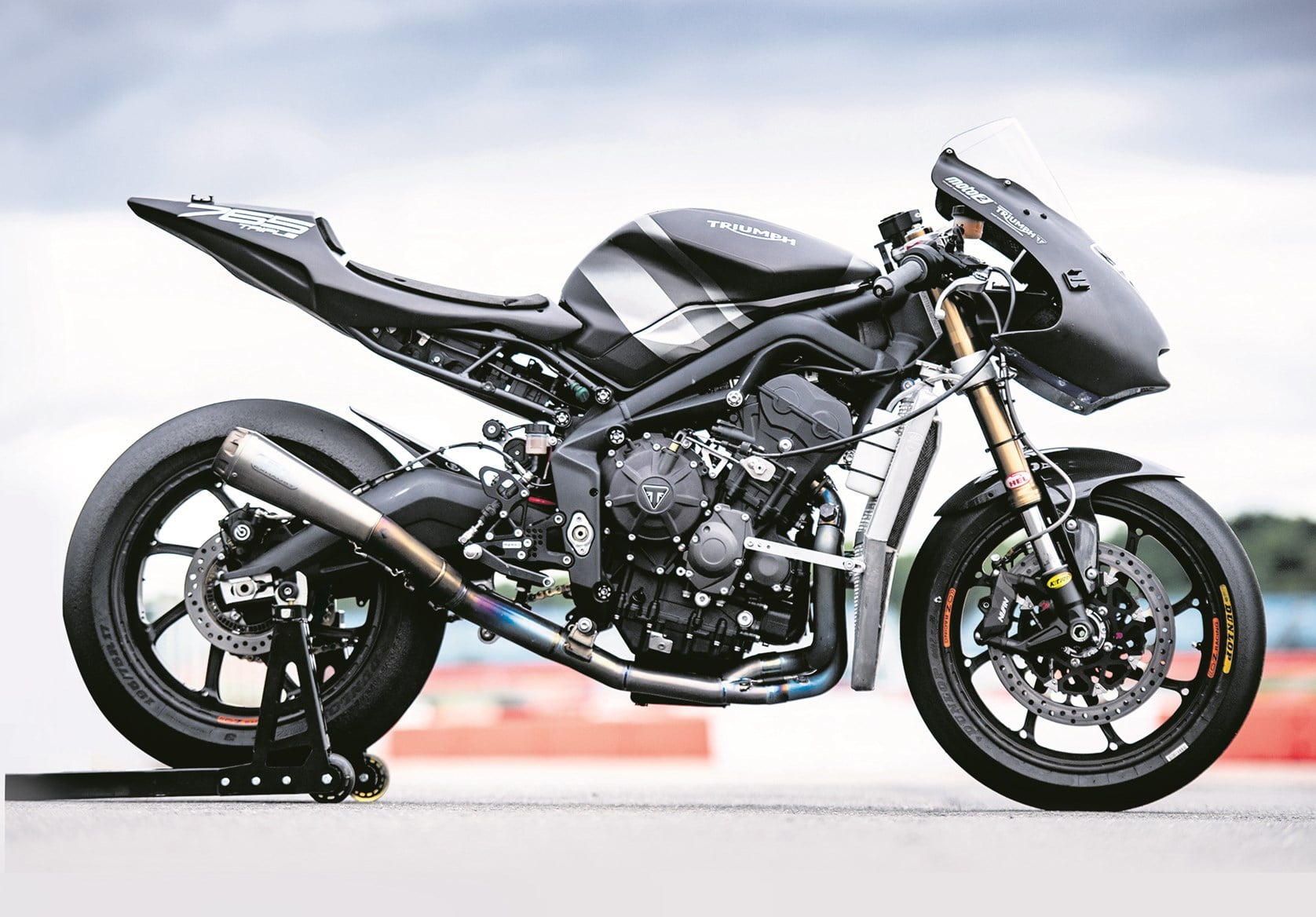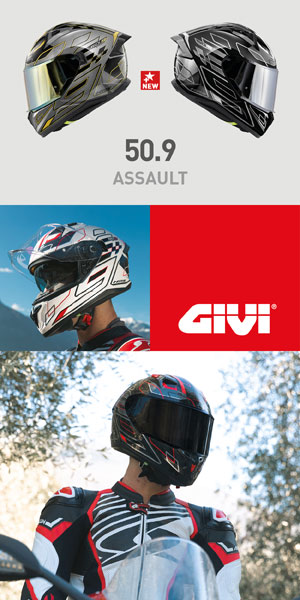MotoGP prototypes are a concentrate of technological developments, but they are not the only motorcycles that take to the track during Grand Prix weekends. Let's take a closer look at the lower categories, to understand what the major differences are.
Compared to MotoGP, there are multiple differences in the regulations for the lower categories, and Moto3 and Moto2 races are always full of suspense and twists and turns!
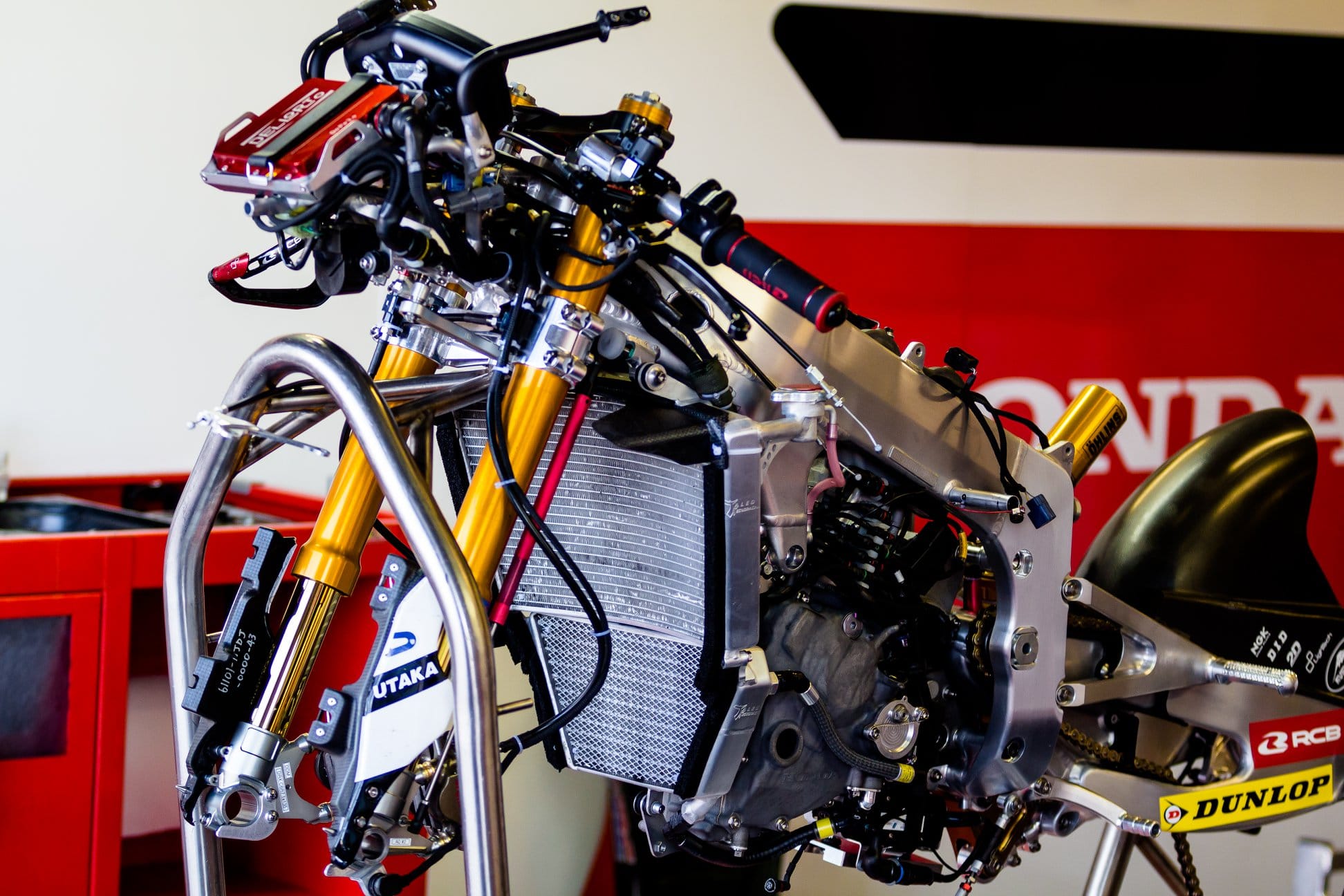
Here is a Honda Moto3
All Moto3s have 250cc single-cylinder engines that produce between 3 and 55 horsepower. We are a long way from the 60 horsepower of MotoGP, but these bikes only weigh 300kg. The weight/power ratio remains very interesting!
Often the question is asked how these engines differ from those seen on production motorcycles and dirt bikes. For the most part, the engines are completely different apart from their displacement.
In Moto3, engines spend a lot of time at very high revs, while motocross engines often spend a lot of their time at low revs, in the peak torque zone. Also, Moto3 engines spend about 70% of a lap at full throttle, depending on the track, but in motocross there is very little chance in a lap of maintaining full throttle for more than a few seconds.
For this reason, the Moto3 engine has a slightly larger bore but shorter stroke than its motocross counterpart.
With longer time spent at higher RPMs, the lubrication requirements are also different. The Moto3 engine requires more oil than the motocross engine and therefore has a much larger crankcase.
The engines cannot exceed a manufacturing cost of €10.000 per unit and must be usable for at least 3 races.
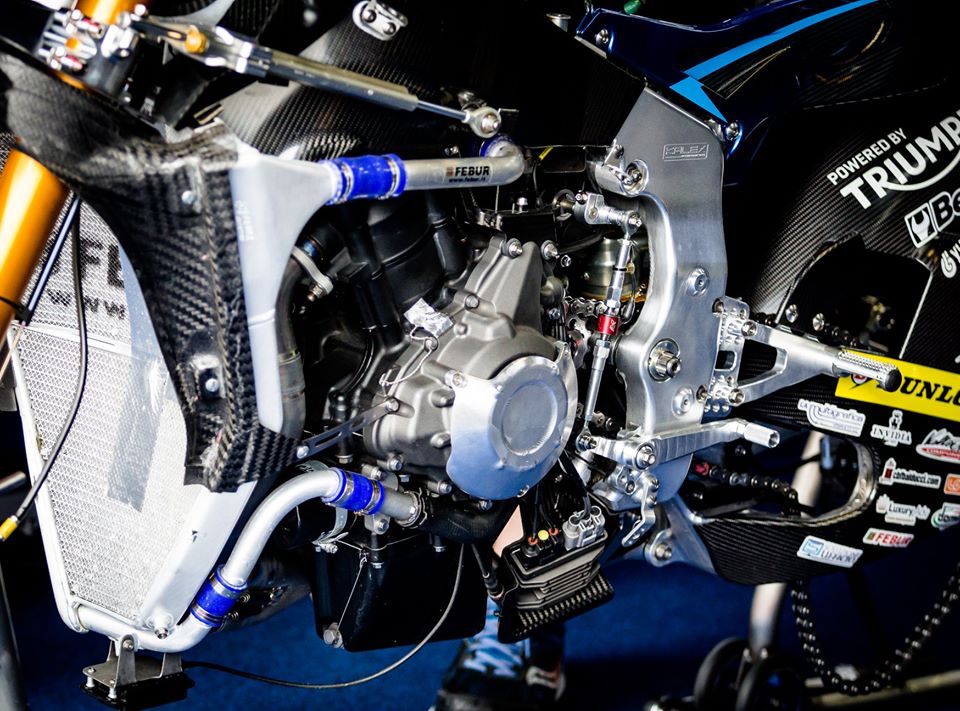
Here is a Moto2 Triumph engine
The technical characteristics of this engine are as follows:
Engine type: liquid-cooled, 12-valve, 3-cylinder in-line DOHC
Capacity: 765cc
Maximum power: 140 hp at 12 rpm
Maximum torque: 80 Nm at 9750 rpm
Bore and stroke: 78 x 53,38 mm
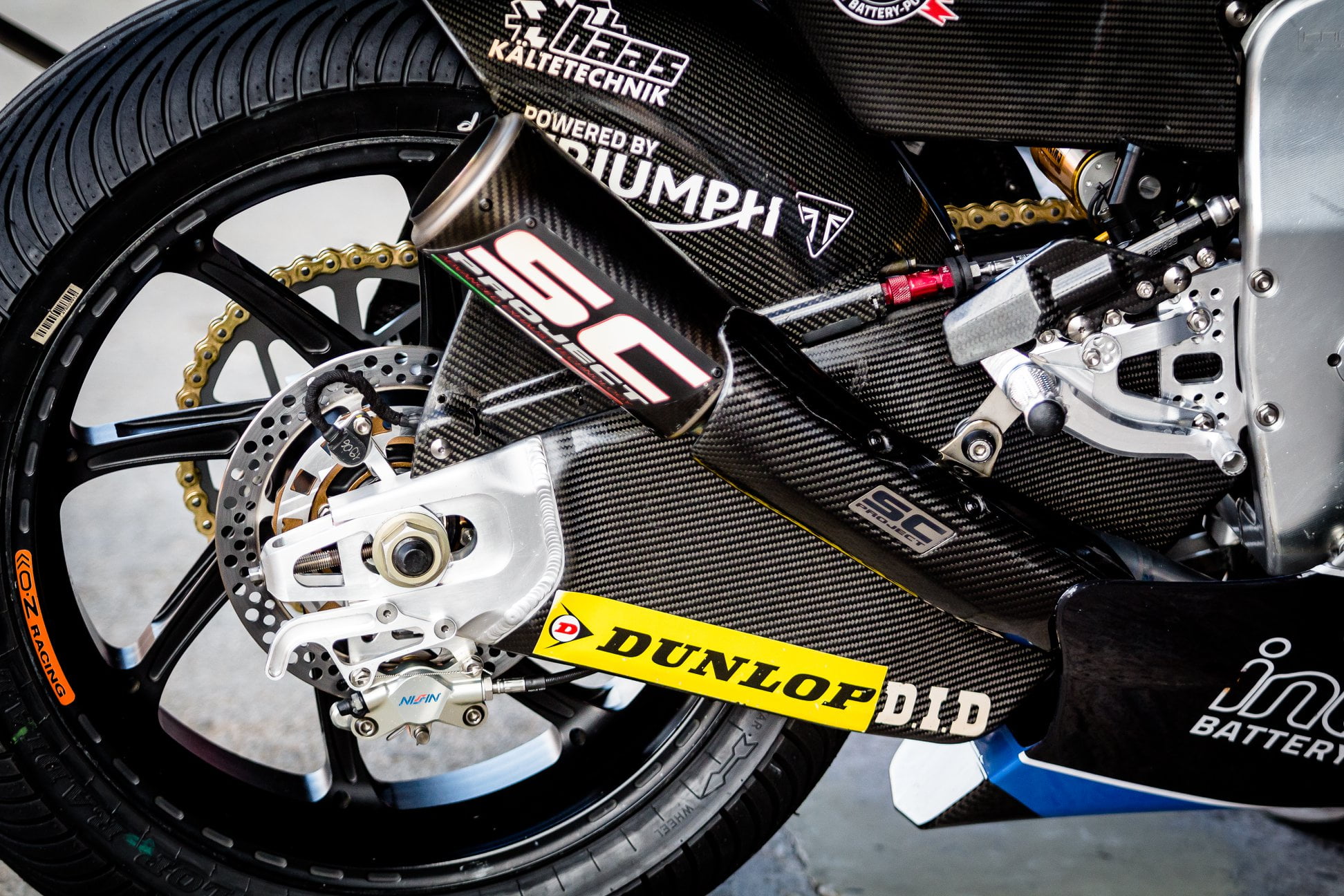
A carbon-covered swingarm in Moto2
In Moto2, carbon swingarms are allowed, while in Moto3 they are not.
The swingarm seen here is not carbon, just covered in a thin sheet of carbon. Teams often add these carbon skins to improve rider feel but also for crash protection.
As you can see in this image, Moto2 machines are full of carbon parts, just like their MotoGP counterparts.
However, unlike MotoGP, there is no minimum weight limit for the motorcycle alone, only for the combined motorcycle & rider, which stands at 217kg.
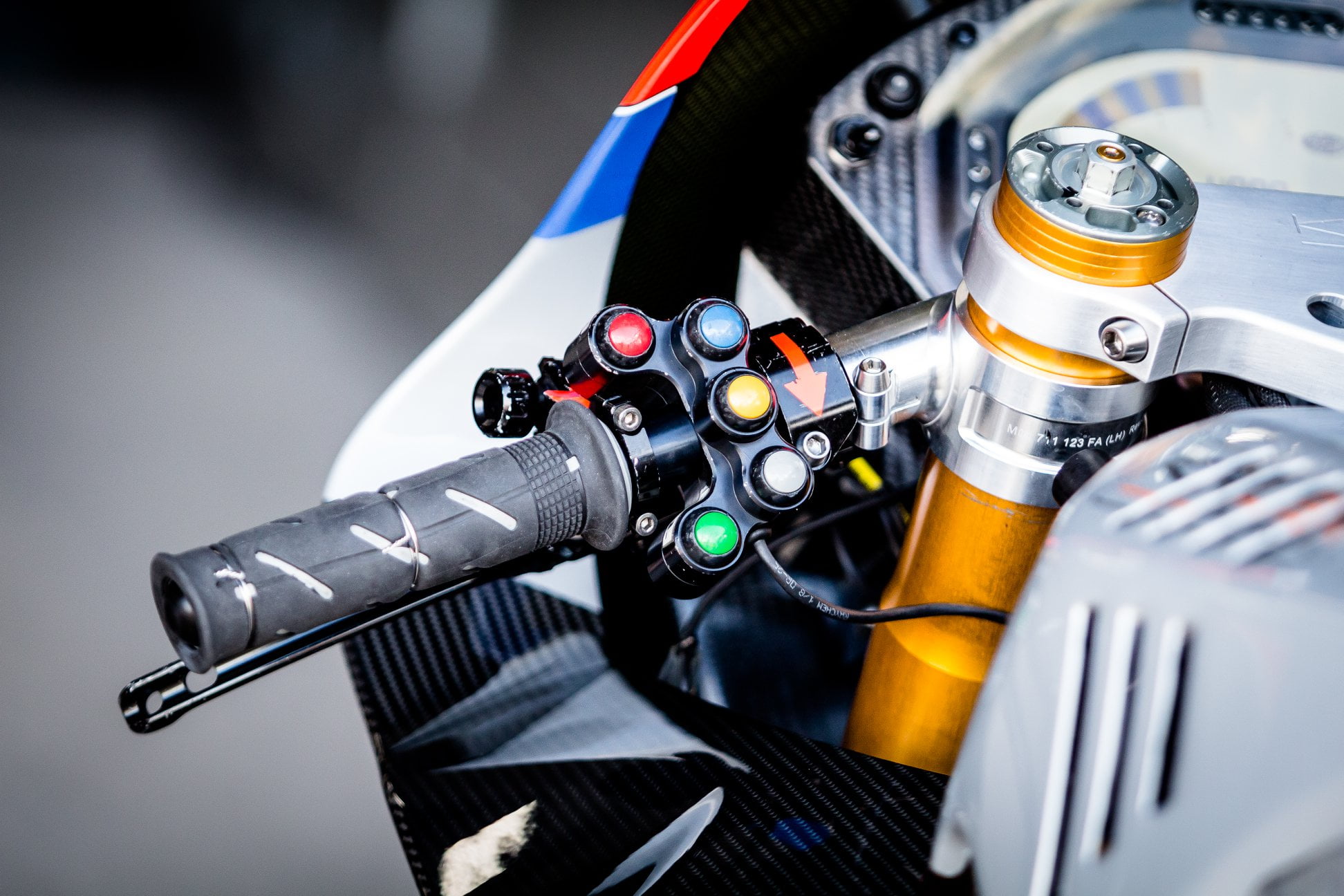
MotoGP? No, you're not dreaming, it's a Moto2, which also has many electronic settings
Historically, Moto2 has been a category that has brought very few electronic aids to the rider, but in 2019, with the Triumph engine, a new electronic package was introduced which included:
– Different power response settings
– Engine brake maps
– Launch Control
Drivers have multiple settings for power and engine braking, plus the added bonus of having Launch Control for starts.
The settings allow Moto2 riders to develop their knowledge and skills in driving a motorcycle with electronic assistance, which they must know how to adjust.
The Magneti Marelli system is supplied as a package comprising a single ECU with data logger, IMU (Inertial Measurement Unit), dashboard, switchgear (pictured) and software to operate the whole thing.
It is unique and common to the Moto2 category, meaning all teams must use it
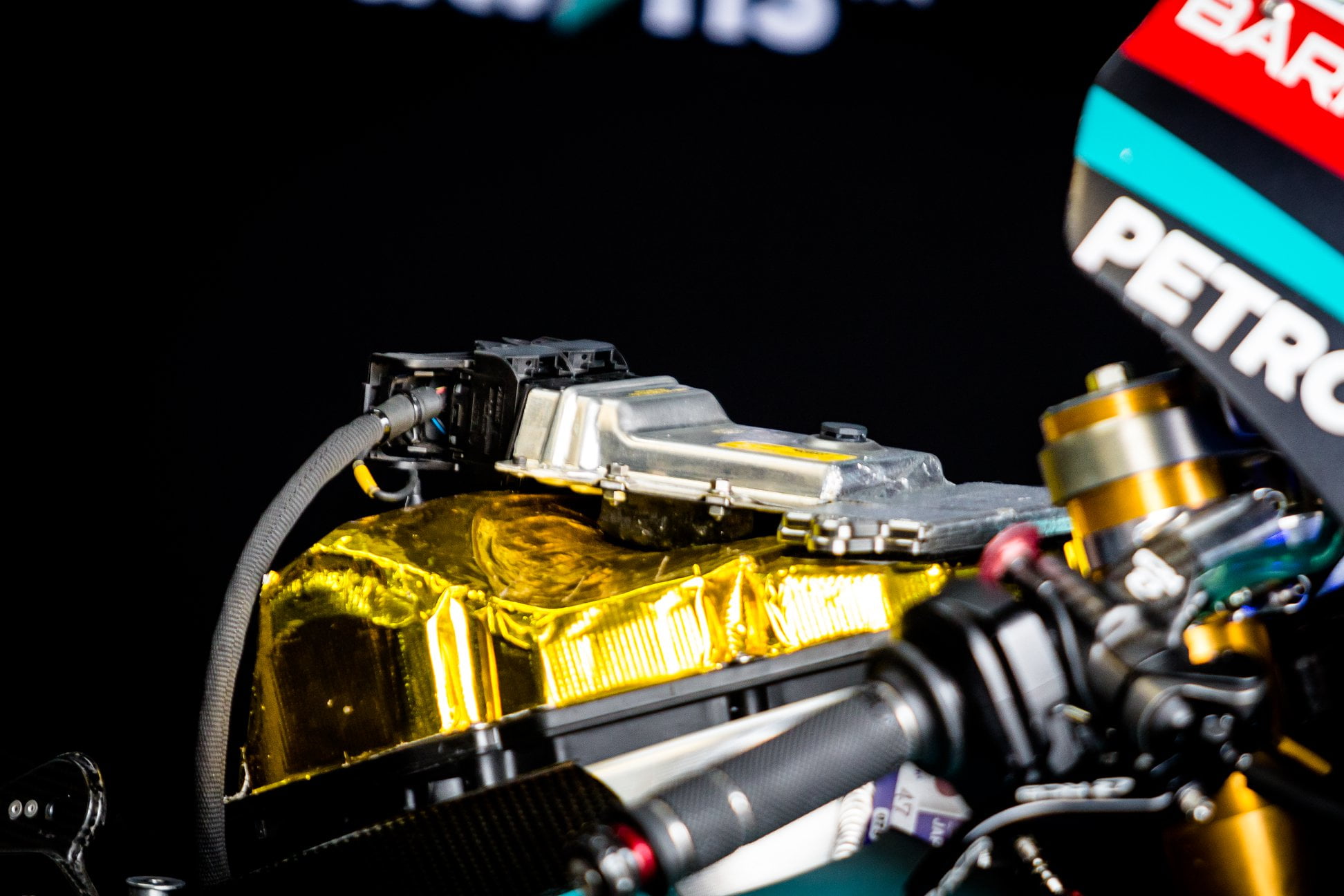
And here is the aforementioned Magneti Marelli ECU
This is the brain of the system Magneti Marelli electronics used in Moto2
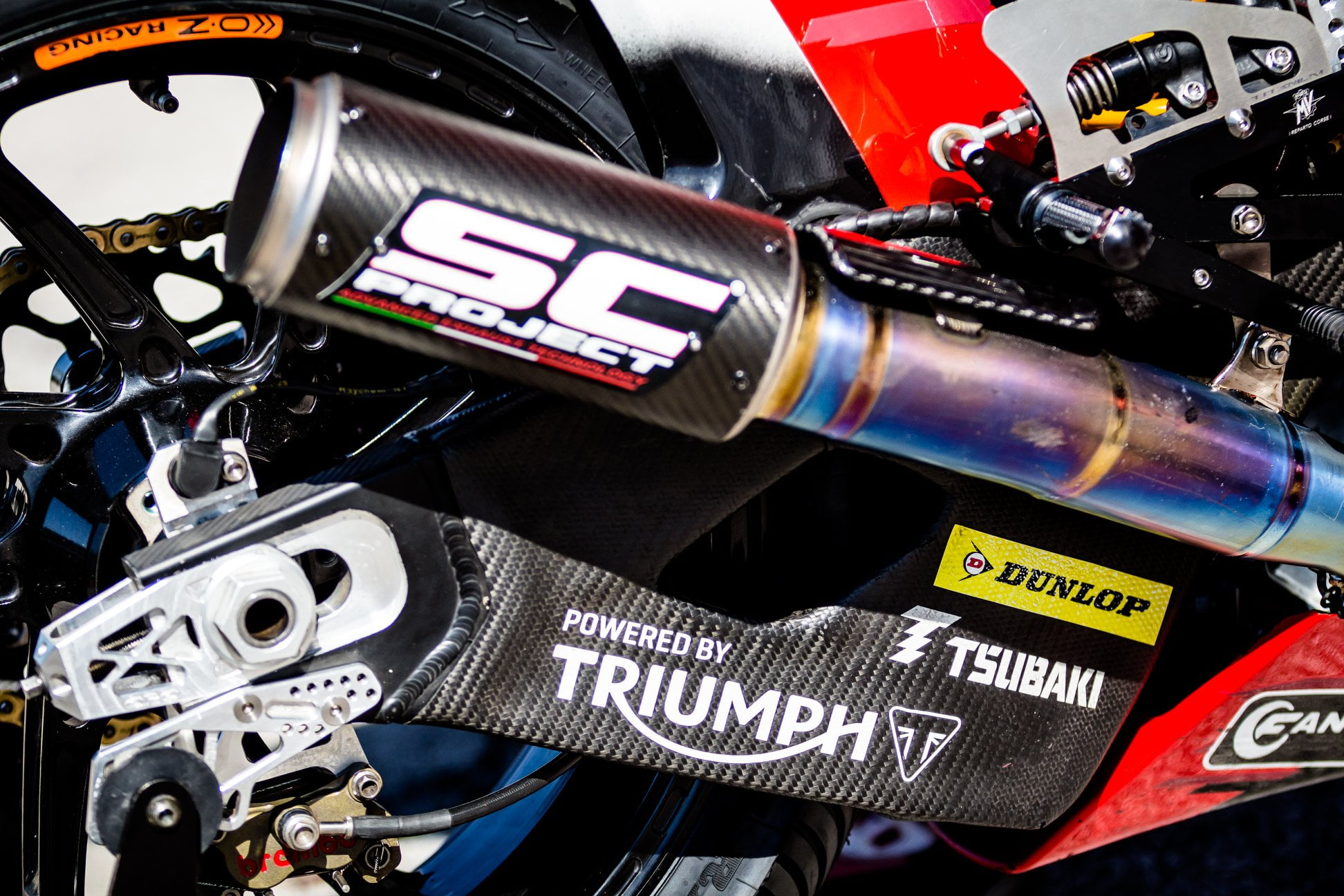
SC Project is one of the suppliers of exhausts in Moto2
Since Moto2 has standard engines and electronics, one of the few components where teams have complete freedom is the exhaust.
The MV Agusta Temporary Forward Team uses the exhaust shown, but many other brands are used in Moto2 as teams try to get the most out of the engine against their competitors.











